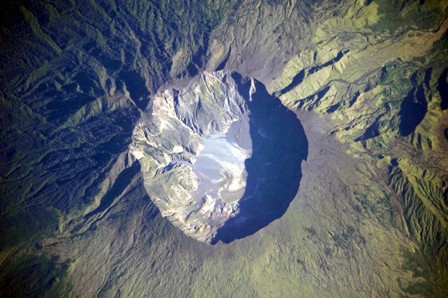- Series:History, Transcript English
Genesis 7:11
“In the six hundredth year of Noah’s life, in the second month, the seventeenth day of the month, the same day were all the fountains of the great deep broken up, and the windows of heaven were opened.”
The year of 1816 was called the “year without a summer.” Weather records and newspaper clippings offer us a record of the unusual weather that struck all over the Earth in 1816.
A Vermont newspaper reported that on June 6 it began to snow and hail at 10:00 in the morning  and continued until evening. In mid-July the corn crop in Maine was almost completely destroyed by frost. In late August the remaining corn crop, as far south as Massachusetts, was frozen out along with other crops.
and continued until evening. In mid-July the corn crop in Maine was almost completely destroyed by frost. In late August the remaining corn crop, as far south as Massachusetts, was frozen out along with other crops.
This bizarre story actually begins a year before, in 1815, in Indonesia. That’s when Mt. Tambora began to erupt with such violence that some of the explosions could be heard 1,000 miles away. In the end, Tambora had blown over 25 cubic miles of debris into the atmosphere. This dust blocked enough of the sun’s light to virtually cancel the following summer all over the Earth.
However, the lesson for us is that huge, Earth-changing catastrophes are a normal part of our planet’s history. It might take normal processes 500 years to create a layer of sediment six inches thick. However, a flood, volcanic eruption or hurricane can create the same layer in only a few hours. Just think how far off evolutionary dating is when this happens. We know from experience that things don’t just continue for thousands of years without some catastrophe taking place.
Prayer:
Father in heaven, the violence and power of an earthquake or volcanic eruption reminds us how helpless we truly are. Increase my conviction that my life always rests in Your loving hands so that the violence of nature does not have to remind me. In Jesus’ Name. Amen.
Notes:
Stommel, Henry, and Elizabeth Stommel. 1980. “The year without a summer.” Scientific American, Dec. p. 176.
